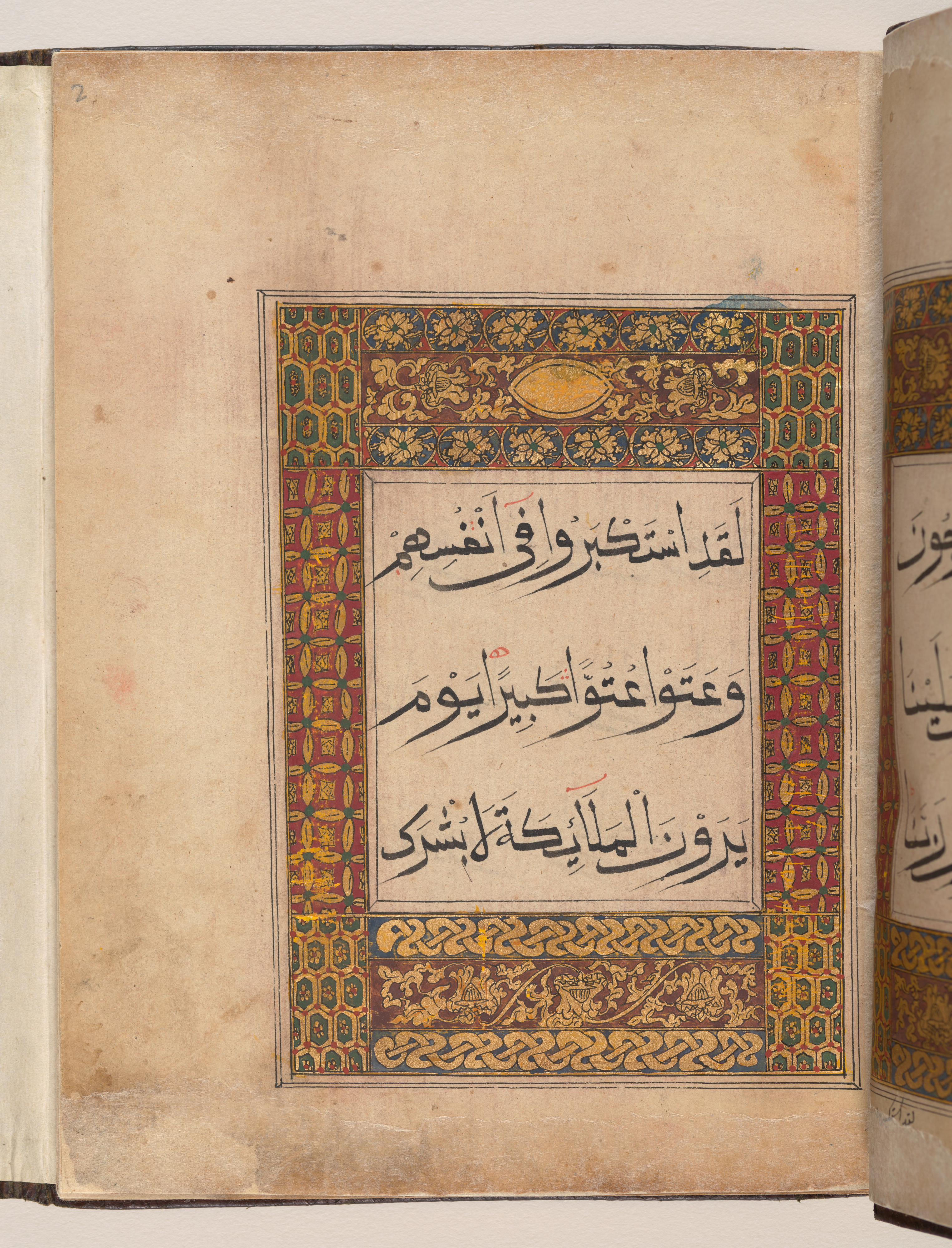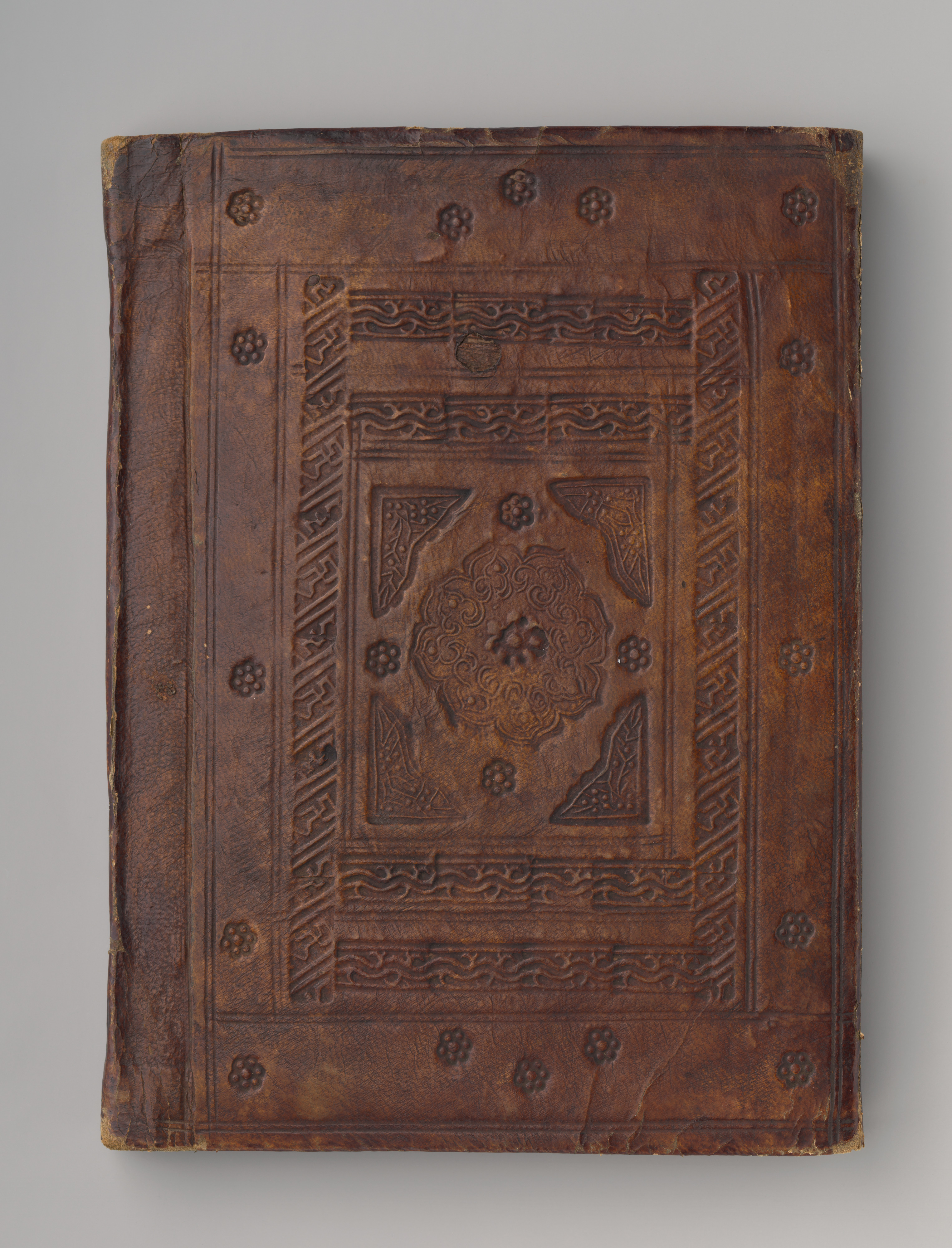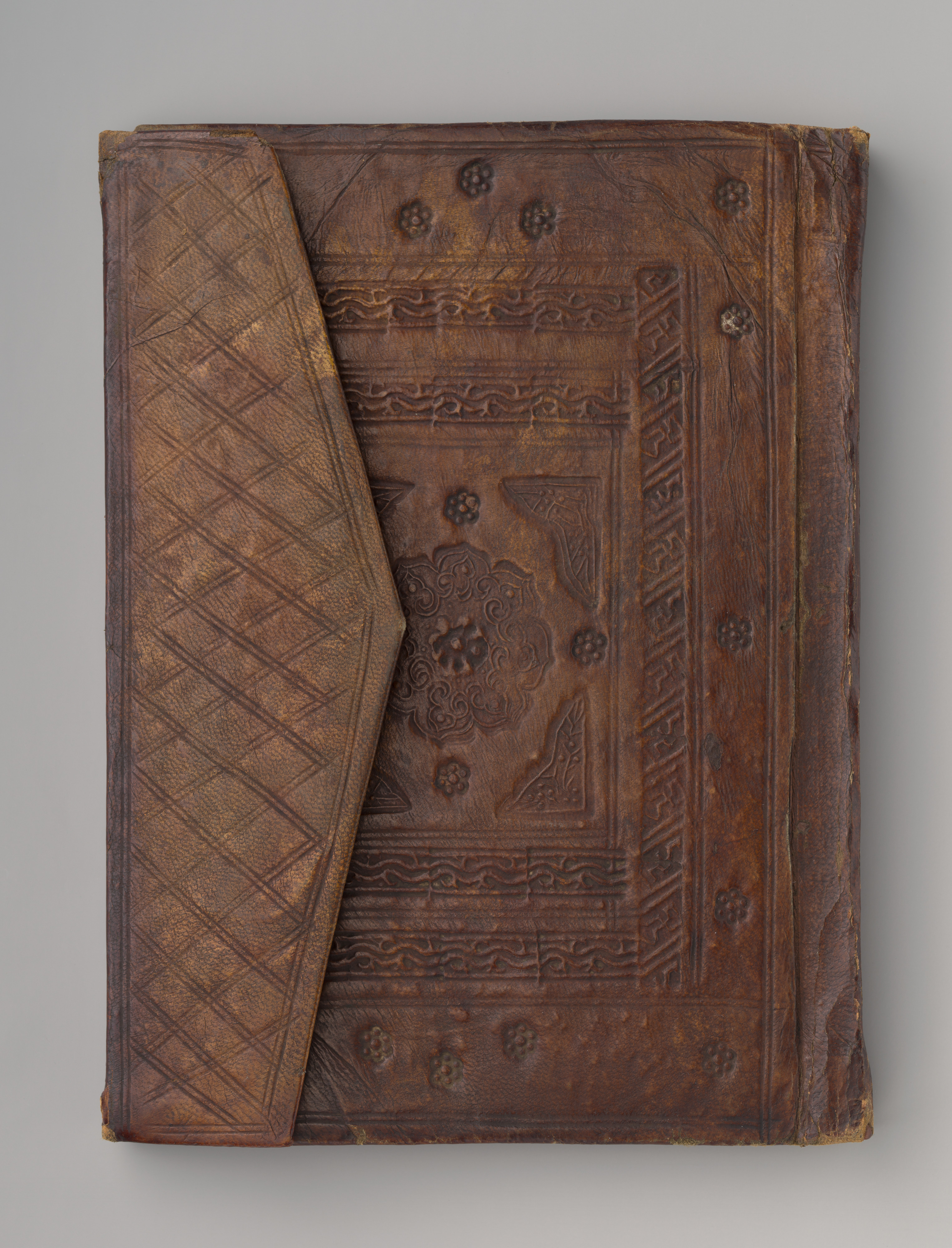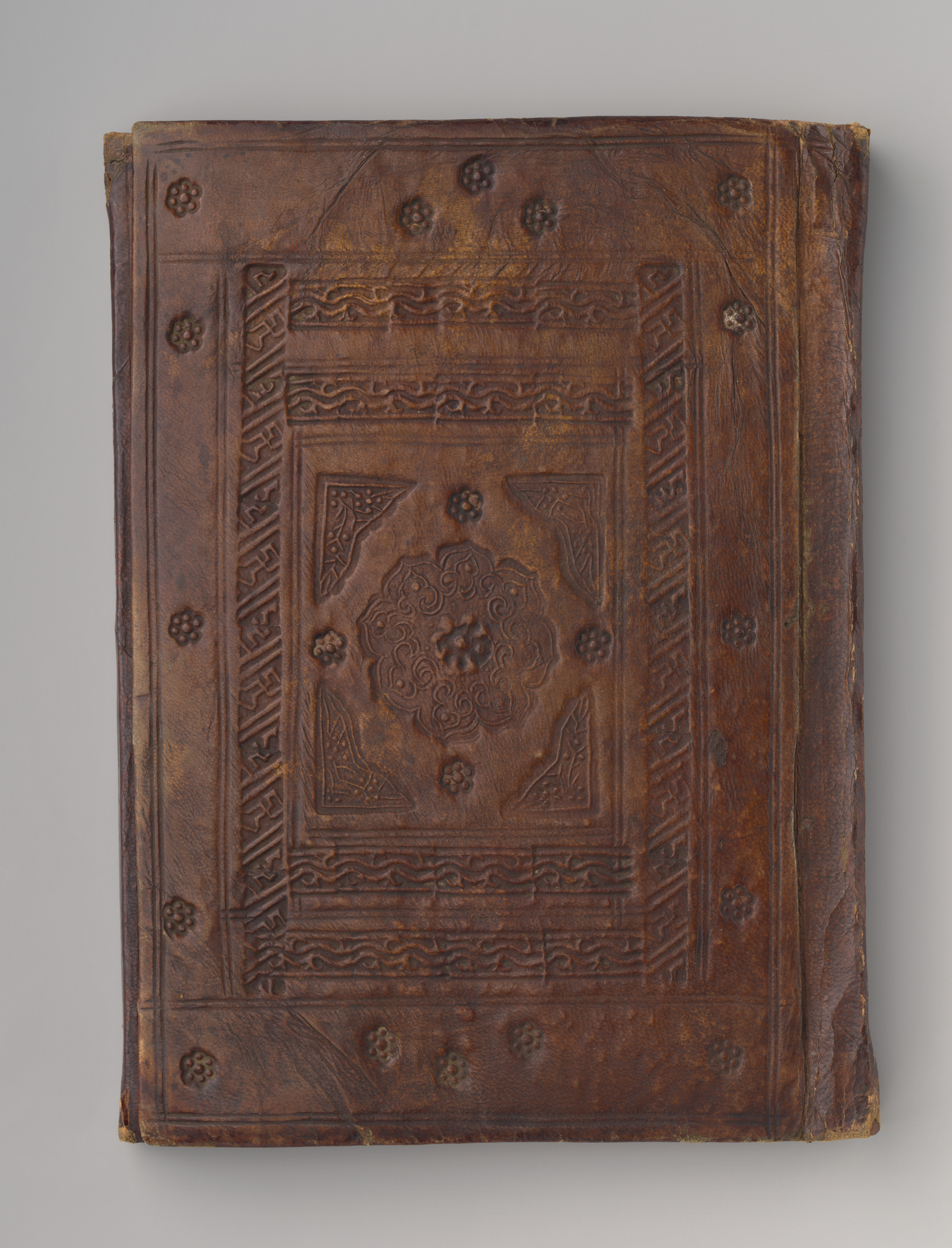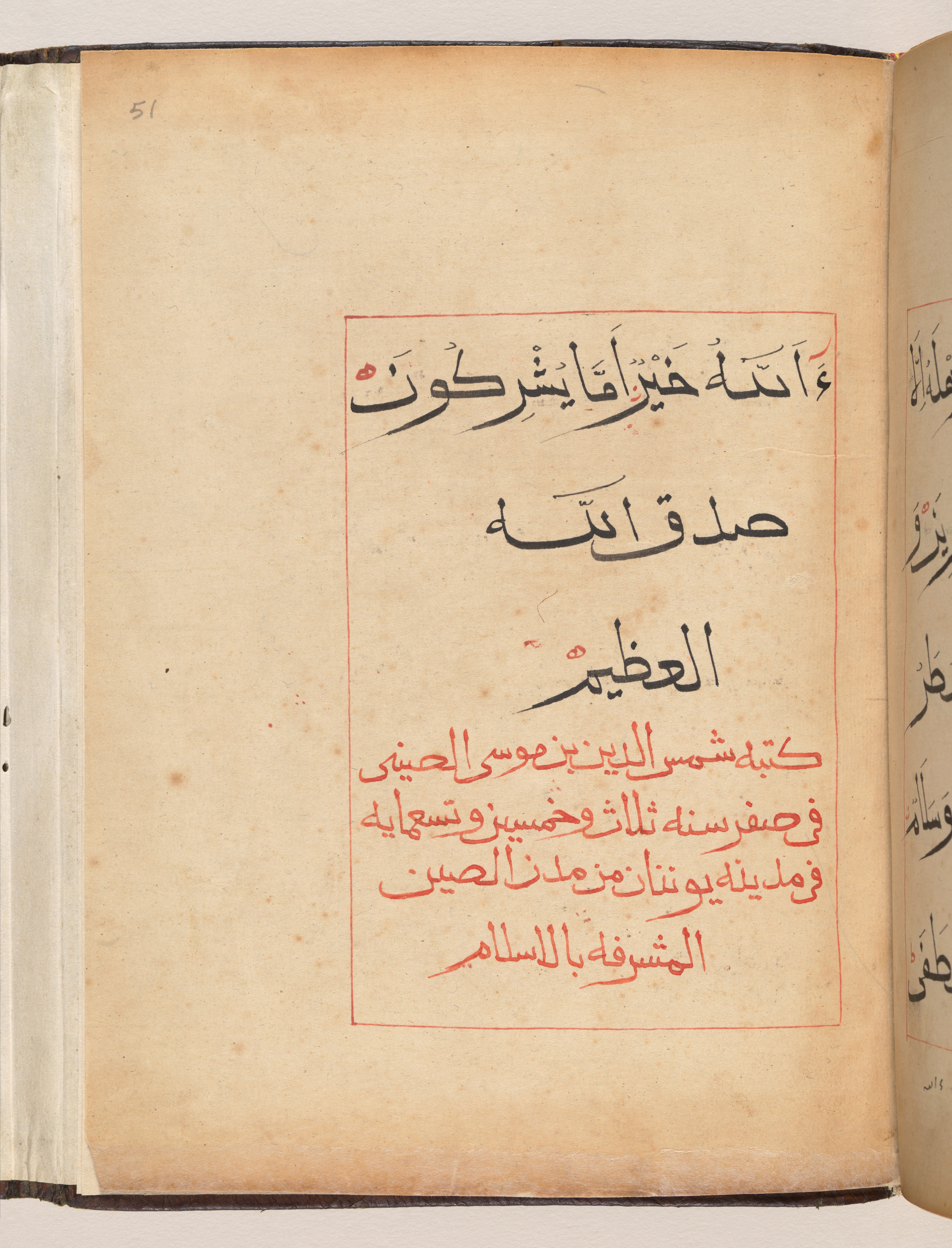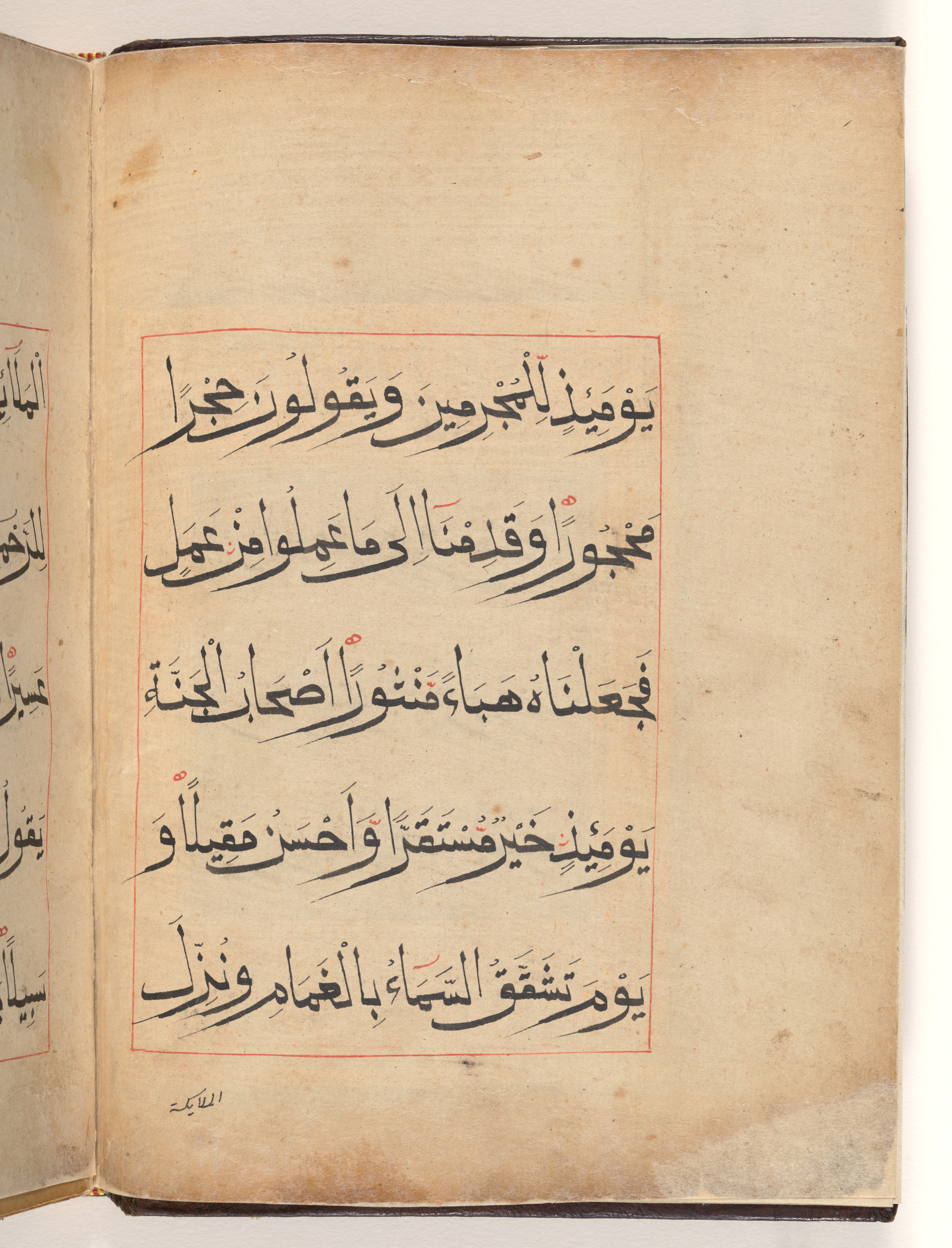Qur’an Juz' XIX
Not on view
This medium size manuscript is characteristic of Chinese Qur’ans, the earliest surviving of which date to the early fifteenth century and were associated with Chinese Sunni Muslim communities called the Hui. Like elsewhere in the Islamic world, Chinese Qur’ans were divided into juz’ (one of thirty parts into which the full qur’anic text is divided) and followed a standard format that endured through the Ming Dynasty era (1368–1644). The Arabic text is written in bold black Sini script—a variation of muhaqqaq (one of the six canonical proportional scripts), with few lines – such as five in this Qur’an – within thin red rules and ample space in between. At times, the letters run over the red rules at the end of the lines. Vowel markers are in black and corrections in red ink. A lavish illuminated double‑page frontispiece is decorated with geometrical and floral designs—including ornate swirling lotus‑like flowers, cloud‑bands, and overlapping circles, in luxurious gold and vibrant colors. Gold is extensively applied on red, green, blue, or brown backgrounds. The drawing of this double‑page is finely rendered and presents motifs—among lotus scrolls and geometric patterns—and a style that compares to Chinese art from the later Ming dynasty (1368–1644), suggesting that the manuscript probably dates to the later 17th century. Further Sini style motifs appear on the brown leather binding with a central medallion made of lotus flowers comparing to Chinese bronze mirrors, or irregularly applied small rosettes.
This image cannot be enlarged, viewed at full screen, or downloaded.
This artwork is meant to be viewed from right to left. Scroll left to view more.



